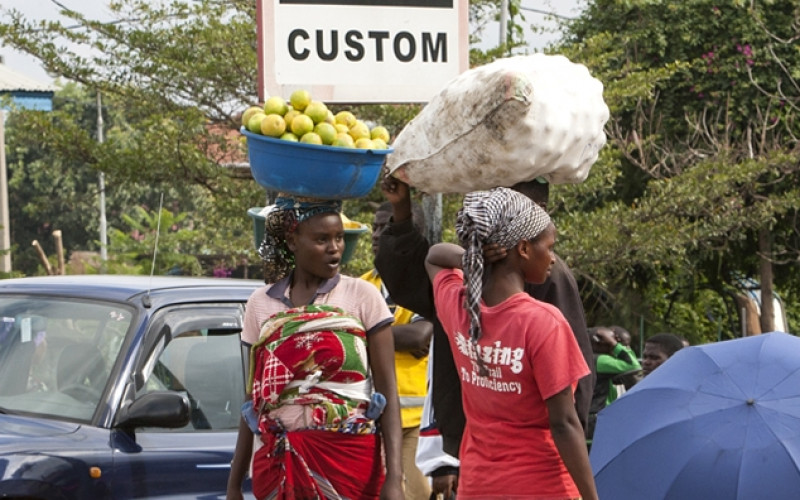The sound bites around this year’s G8 seem to be dominated by just two points of view. One uses the shocking statistics on unmet needs in Africa as a sufficient basis for urging substantially increased funding flows. The other scores telling points against an approach that worries so little about feasibility but fails to offer an alternative vision for aid.
Thus, a ping-pong ball is batted back and forth between two positions:
- The needs of the peoples of Africa are enormous and urgent. It is a moral outrage that we cannot meet them, even in the most basic ways. So, a massive increase in aid resources and debt relief is the minimum acceptable response.
- What matters is feasibility. If aid were a way of meeting development objectives, it would have done so long ago. Aid is in some ways part of the problem, and more aid is certain to mean worse aid. So, massively increasing aid flows is either irrelevant or seriously unwise.
It is hardly surprising if people subjected only to these limited points of view are confused. That situation would be easier to justify if understanding of the issues were in short supply. But the fact is we have a massive amount of relevant knowledge – quite a lot of it enshrined in well-known reports, books and declarations. We certainly know enough to root the G8’s deliberations in a perspective that is both more realistic and more hopeful than the current ping-pong.
Quantity versus quality: We should first of all concede that elements of the sceptics’ case are well founded. All the evidence on past performance suggests that aid flows are not what make the difference between successful developing countries and unsuccessful ones; aid can facilitate – it has never done more than that. Political scientists are also quite clear that aid can be part of the problem, because of the way it takes the pressure off political leaders who might otherwise be forced to perform better by market forces or their own taxpayers. Economists tend to find a positive statistical relationship between aid and economic growth, but don’t agree about what it adds up to. Anyway, as the aid-to-GDP ratio increases diminishing returns naturally set in.
Fix what’s broken
In the aid case, we don’t just know that aid can be ineffective. We know quite a bit about why this is so – about the precise factors that limit the positive and increase the negative impacts of external assistance. This understanding provides a solid enough basis for specifying what needs to change in order for a larger financial effort by the rich countries to be useful.
So, more aid to Africa may well mean worse aid. But it doesn’t have to. There is a real opportunity to make 2005 the year not just when aid volumes began to revive, but when the past relationship between aid quantity and aid quality was turned around.
What needs to change: The factors influencing aid effectiveness are not restricted to conventional “aid quality” issues. They affect both sides of the aid relationship. It is not the case either that all the faults lie on the donor side or that recipient-side failings are the only significant obstacle. For quantitative improvements in aid flows to become associated with enhanced effectiveness, the two types of limitation on quality would need to be tackled simultaneously and with equal vigour.
On the donor side, quality means:
- better value for money – a vigorous assault on tied aid and on the promotion of narrow donor interests;
- firmer commitments and more predictable financial flows, so that where countries have clear policies these are able be planned and implemented;
- greater efforts to deliver aid in ways that strengthen country institutions and the incentives for governments to make clear policies;
- better understanding of countries’ social, political and administrative systems, so that fewer mistakes are made in channelling support; and
- a more careful and coordinated selectivity in allocating aid, so that basic human needs are met whenever feasible but the changes in institutions that are needed for long-term development are effectively supported as well.
- On the recipient side, quality means:
- better value for money again – an assault on waste, as well as leakages of all kinds, using methods that work in the context;
- more predictable funding flows to ministries and implementing agencies, implying a stronger commitment to good practices in public financial management;
- greater insistence on aid modalities that strengthen institutions and policies, and the defeat of the vested interests that surround the usual free-for-all in project funding;
- consistent, high-level support for the unpopular but essential reforms in administrative systems; and
- a political project focused on state-building, in which the satisfaction of citizens’ basic needs has a central place within a long-term vision of national development.
We know that both these sets of changes are necessary if more aid is to be provided in a way that improves and doesn’t reduce aid effectiveness. Yet we allow the public debate to be conducted as if matters were far more simple, in one sense or the other.
This alternative vision of possible change is, of course, a bit more complicated, as well as more challenging in political terms, than the ones now dominating the air waves. It is not likely to pull campaigners into the streets in their thousands. But it is both realistic and hopeful. It deserves at least a fraction of the hearing that is currently being devoted to simplistic moral appeals and crude rebuttals.
-This article is reprinted from the Overseas Development Institute.







